When it comes to game releases every year has its big headliners and hidden gems, but none were more packed than 2017. As my backlog-related project for this year I'm looking to build a list of a hundred great games that debuted at some point in 2017, making sure to hit all the important stops along the way. For more information and statistics on this project, be sure to check out this Intro blog.
Much like an academically-reviewed Navarro stream things are trucking along smoothly here with Dredge of Seventeen, March adding another four games to the list to bring us up to a not-so-round total of 79 list entries. Many short and sweet affairs from the Indie corner of my 2017 backlog this time; I've been so focused on completing Dragon Quest XI by the end of the month (I am currently in its substantial "post-game" chapter, so I've no idea how much is left) that I barely had time for both the following and the usual Indie Game of the Week rabble. I think each of these four games took around one or two sessions to complete, though not without some difficulty. I have some much longer games waiting on the sidelines of course, but finding the right time for them is going to be a challenge (and I can't imagine I'll squeeze in too many other 2017 games on those months - it's why it's important to keep the completion average high for the time being if I still want to hit 100 by December).
RosenkreuzStilette
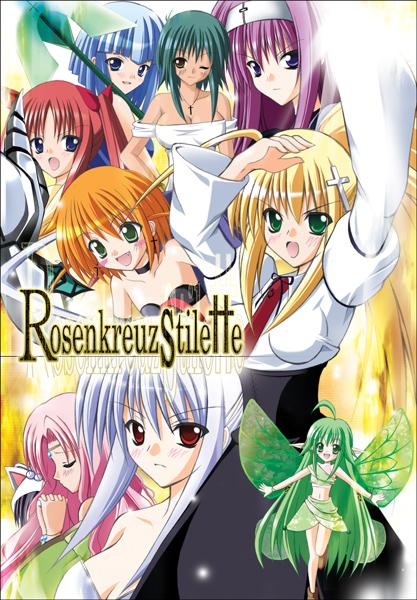
I'd seen screenshots of this Japanese Indie platformer, and of course that name stands out quite a bit, but I guess I never paid enough attention to what exactly RosenkreuzStilette was all about beyond its veneer of magical anime girls in trouble. Turns out this was a Mega Man fan game all along, and not particularly subtle about it.
The protagonist, Spiritia Rosenberg, is part of a (tenuously) Vatican-approved mercenary group of supernatural beings and magic-users. The group is now in open rebellion against the Church for reasons that aren't initially clear, with Spiritia absent from all the in-group conspiratorializing due to some remote training. Upon her return, she determines that something rotten is afoot and decides to knock around her old compatriots to bring them back to their senses. Her former team of eight other magic-users comprise the game's equivalent of the Robot Masters: they can be fought in any order, each has a certain elemental power, and defeating them allows Spiritia to use those same powers in subsequent stages. With some careful experimentation, you can deduce (or just look up) which opponent is weak to which other opponent's magic and plan a route through the game accordingly.
Many bosses and levels are direct homages of the NES Mega Man series, including the compulsory Yellow Devil equivalent and that one asshole dragon from Mega Man 2 (except now it's a wall that shoots crucifixes at you). Just imagine Mega Man with a Touhou paint job and a dash of Castlevania's gothic eeriness and you're most of the way there. (I could've also invoked The Krion Conquest here, but I can't be sure anyone remembers what that is.) I'm a huge fan of the old Mega Man games and am well acquainted with their difficulty level, so while the game is very challenging - especially the boss rush in the penultimate stage - it was not insurmountable either. Many of the tougher stages let you farm energy tanks (mana tanks... whatever) at the start for a while and each boss has at least one weakness; the normal eight bosses are also weak to their own weapons, making their rematches a little easier. There's no avoiding how much this feels like an elaborate ROM hack though, with all new graphics and music (speaking of which, the soundtrack's pretty darn good) but much of the original level design intact. Yes, that also means disappearing blocks, those obnoxious Quick Man lasers, and the obfuscating cloud cover of Air Man's stage. The few aberrations include weirdo Schwer-Muta Casasola Merkle's stage, which is full of kaizo deathtraps (but the amusing kind that you only fall for once), Sichte Meister's boss fight which plays mostly like Flash Man except she does the whole "za warudo" Dio Brando thing instead, and a couple of Castlevania boss clones for a bit of variety.
This is a 2017 game by the thinnest of definitions: its original PC release was way back in 2007, joining what was then a small cadre of internationally popular Japanese Indie games (a.k.a. doujin) many of which were modelled closely after popular but defunct video game genres/franchises like 2D explormers (Cave Story), shoot 'em ups (Touhou), and indeed classic Mega Man. It took ten years for an official localization to happen, though many of its non-Japanese fans have long been enjoying the game prior even if they couldn't understand the dialogue - it's notably popular in the speedrunning corners of the internet, especially with runners that already have an affinity for Mega Man. The localization of its sequel, which follows one of Spiritia's rivals and has the even more elaborate name RosenkreuzStilette Freudenstachel, was also released on Steam in 2017 so we might be seeing that one further along in this project also.

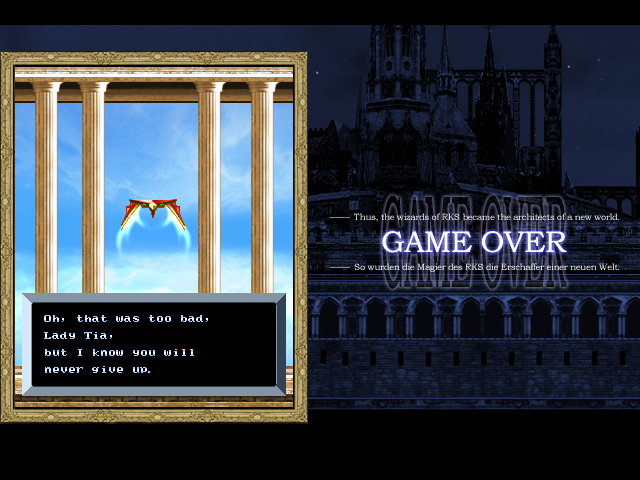
Ranking: C. (It's a little rough around the edges and, well, more than a little familiar, but I appreciate it as an important bit of Japanese Indie history and it's every bit as entertaining and demanding as its inspiration. I'm thinking dead center of the list at present, around where Yooka-Laylee is (another nostalgic platformer with a few missteps and old-school annoyances).)
Yono and the Celestial Elephants

Yono confounds me. Not in a negative, frustration-producing type of way, but in how it presents itself as one thing aesthetically and a completely different thing narratively. Let's start with the former. From glancing at screenshots, you'd be correct in assuming the game is an isometric action-adventure game that owes a significant debt to the Legend of Zelda franchise. Yono, the titular blue baby elephant, has a handful of abilities which don't change for the whole playthrough, including a headbutt used as the primary means of attack and the ability to blow air and other projectiles through his trunk. The game is a mostly linear affair that has Yono travel from one destination to the next solving environmental puzzles to proceed and occasionally completing side-quests and other bonus goals for collectibles and health power-ups (every four of these gets you a new container on your health bar, typically enough). It both looks and plays like a kid-friendly entry-level Zelda game, though not necessarily one that always pulls its punches especially where its boss fights are concerned.
Narratively, the game feels entirely different. It's packed with heavy themes about capitalism, workers' rights, the curse of self-awareness, the cycle of life and death, systemic oppression, and the difficulties that can result from always trying to do the right thing and being burdened with the hopes and dreams of the entire world, and is frequently insightful and trenchant with its observations in a way you might not expect from its colorful and elementary art direction. Elephants in this world are treated like divine beings, with one appearing each millennium to usher in a new age of peace and to advance civilization another step; Yono learns more about his predecessors as he speaks to NPCs and explores, and how each helped foster massive structural changes to society and to humanity's understanding of the world. The very first elephant is even thought to have been the one to teach humans how to farm and cultivate the earth, putting an end to the era of nomadic hunter/gatherers and leading to the first cities. Humans are depicted as a friendly but wary sort who haven't been fully able to adapt to some significant recent changes, which is especially true of their paranoid queen. The other races include the bonewights: intelligent zombies that regularly spawn from the battleground of an ancient, devastating internecine war who are philosophical about their immortality, their minimalist lifestyles, and their largely passive relationship with the other kingdoms. For instance, they politely eschew formal trade agreements since they have no wants or needs and subsequently neither produce nor consume trade goods. The other are the Mekani: a race of synthetic lifeforms that recently approached "the Singularity" with regards to their self-awareness and are now capable of producing their own even more advanced offspring, and are still trying to find their place in the world. They suffer sanctions from the distrusting human kingdom that stunts their growth and they contemplate open rebellion as a result, though most are peaceful and would prefer to find a solution that did not involve violence. Yono realizes that fixing the problems between these three disparate nations is a lot tougher than occasionally squirting water at goblins or pushing a rock onto a switch, and the game makes it clear that this world, much like our own, lacks any easy or permanent answers for maintaining peace and harmony. Fortunately, it's something Yono will have several centuries to figure out.
I found this game deeply fascinating at turns and much too straightforward and basic at others, creating what was probably an intentional dichotomy of complex themes and simple gameplay. As a British '80s kid I probably have more reverence for the humble isometric puzzle-platformer than most, and I enjoyed the game's small variety of puzzles even if the mashy combat was less compelling. There's a substantial amount of fetch-questing to be done if you wanted some extra upgrade materials, as well as a separate collectible that allows you to translate and read adventures of the previous elephants (which, again, lead to some inspired storytelling about the often troubled nature of humanity as well as our potential for greatness), and there's this intriguing arc concerning a spirited adventurer girl and a clumsy acolyte of the elephant-based local religion who initially exist to deliver background and tutorial information but continue to grow as you keep encountering them throughout the game, learning alongside you about the nuanced struggles everyone is dealing with and adapting their once-shallow worldviews to accommodate these revelations. While mostly rudimentary and even a little glitchy (collectible totals can sometimes shift unexpectedly while passing through area transitions), Yono and the Celestial Elephants definitely has more going on beneath its surface than a cursory glance of its cutesy screenshots might suggest.
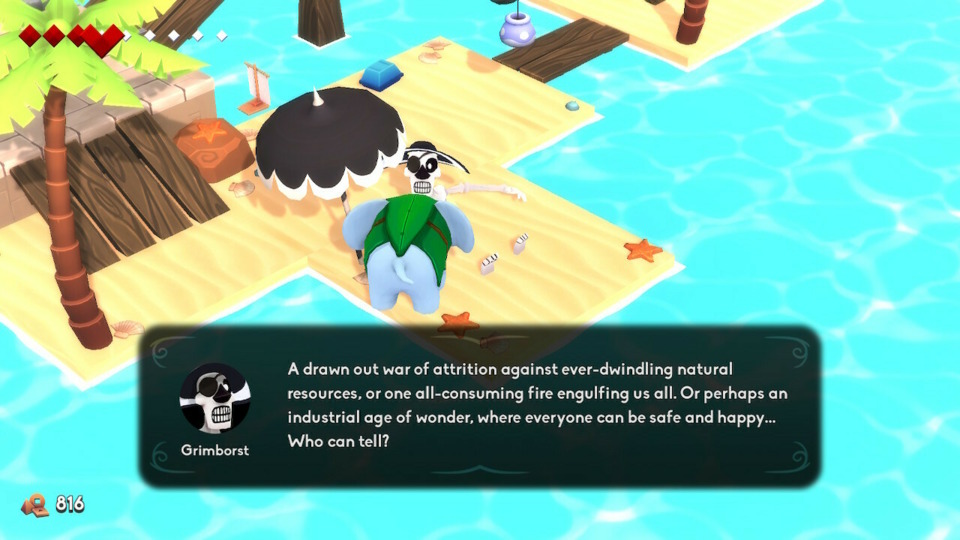
Ranking: C. (I don't think the core game is all that exceptional as a Zelda clone, probably on a tier with the original Ittle Dew or maybe Oceanhorn, but the novelty of its mature dialogue and story does raise it a little higher in my estimations. Probably looking at around the 50s for the time being - subject to change as the list grows, of course.)
Forma.8
You know me, I had to fit in one of my beloved explormers somewhere. I've at least three more lined up before this project's done, unless I can somehow find even more of them. Forma.8 is one of those free movement explormers like Aquaria or Song of the Deep, which aren't really explormers at all because the platforming aspect of that yet-to-catch-on portmanteau is moot, but still beholden to the usual tenets of the genre: there's a map, there's upgrades you need before you can reach some areas, there are boss fights (though only like three or four in this case), and there's a huge amount of optional backtracking.
The plot is practically non-existent, as this comes from developers (MixedBag) that evidently went to the Nifflas (Saira, Knytt Underground) school of atmosphere and tone above all. You're one of several spherical drones sent down to a planet for some reason, though you're the only one to survive the landing; the others, whose broken forms are littered across various hard-to-reach places, are the sources of your eventual upgrades. Since there's no text, you glean most information from context clues and ideographs; your power-ups in your inventory just have icons to explain what they do and the appropriate face button or key to activate them. The game has a stark graphical style that reminds me of Eric Chahi's early work: a whole lot of flat colors and angled shapes with no outlines, which are simple but effective in establishing this alien planet and its topography. Since you can freely float wherever, most of the enemy encounters and hazards tend to involve shoot 'em up mechanics like strafing around enemy fire and carefully lining up your own shots; it's pretty similar to Insanely Twisted Shadow Planet if you wanted a point of comparison.
For combat options, the protagonist picks up two weapon upgrades fairly early on: a limited range shockwave that can deter enemies trying to collide with you, and a mine that is dropped at your location and does more damage than the shockwave if it or its small splash zone connects. It doesn't take long for the player to realize the shockwave can also project the mine like a ranged weapon, with some helpful UI to give you some idea of where the mine will move once you've pushed it. It can be iffy to line it up with where a distant enemy is, especially if they're moving, but it is and will remain the most effective weapon in your arsenal. Later upgrades are traversal-based: they include a dash and, eventually, a short-range teleport. The latter of those is needed for a great many collectibles you can't otherwise reach, so it's sometimes worth keeping a note of where they are for later. If you're patient enough to jump through the hoops to get it, there's a "secret" power-up that indicates where all the collectibles and health upgrades are on the map by changing the contours of those rooms from white to blue; I always appreciate tools like this given my collectathon brain worms. The collectibles have a purpose too: for every ten you find, you can unlock a useful if inessential upgrade (such as, say, being able to lay two mines at once) by taking them to a certain room.
I ultimately found Forma.8 to be a bit on the ponderous side. There's no effective fast travel system, as what teleporters there are only have fixed destinations and aren't too helpful (though you can unlock shortcuts to earlier parts of the game), and not having any semblance of a plot or a progression besides a single glowing spot on your map to head towards robs the game of any stakes or meaning. It's more about exploration, soaking in the lonely ambience, and poking around to see where's accessible and surpassing any challenges that present themselves. Momentum and physics are big factors in the player's movement and in some of the puzzles, specifically those that involve pushing rocks onto switches, but it's not frustrating in the way some unpredictable physics-y game design can be. I don't think it's an explormer that's going to leave any strong lasting impressions given how many others of its type came out around the same time with bigger ideas or more direction, but it's a solid if somewhat detached example of the explormer genre if you happen to be looking for a new one.
(Usual disclaimer here: This game was included in the Itch.io Racial Justice & Equality Bundle from last summer. I always find it's worth pointing that out for applicable games because I'm sure a lot of folk bought that bundle without knowing its full list of contents (I know I didn't).)
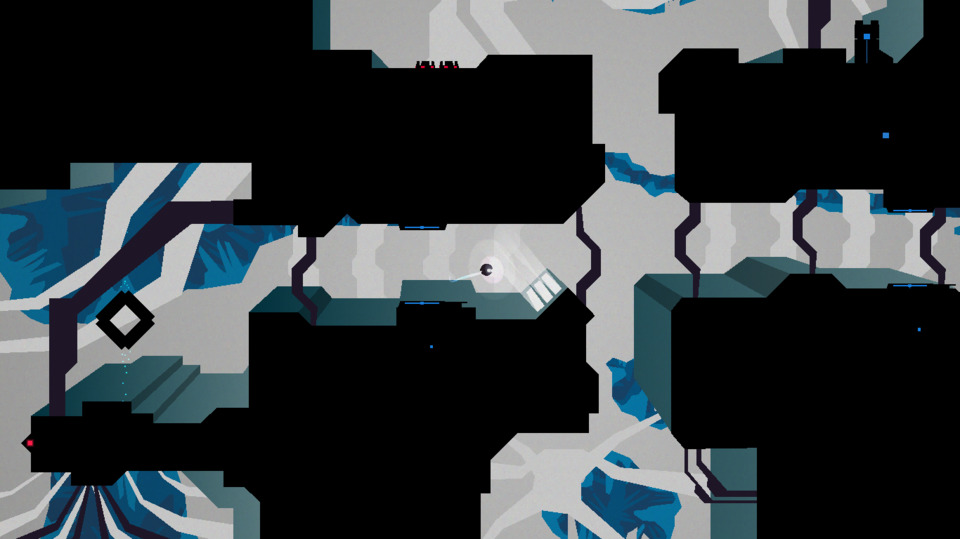
Ranking: C. (Yeah, low 50s again I think. I enjoyed my time with it and it doesn't pull off any egregious missteps that can sometimes pop up in these explormers - though I did once find a key behind a locked door, which is a big no-no since I could've used the original key I had elsewhere and missed that part of the map completely - but it was a little too leisurely for my liking. It's certainly not better than Wonder Boy & The Dragon's Trap, which is presently chilling at the top of the C-rank tier after dropping a few spots.)
Queen's Quest 2: Stories of Forgotten Past

Yep, another HOPA. Once I have enough of a hidden object "cushion" at the bottom of my top 100 list I'll probably desist including these rudimentary adventure games, but I still find them oddly compelling in short bursts. At this point I can complete them on autopilot, sort of like picross or Tetris, and there's always going to be gaps in my schedule where I want to veg out for a while.
Queen's Quest 2 does feature a queen, but that queen is not you. Instead you play as an unnamed alchemist (everyone just calls you "Alchemist," which struck me a bit rude, but I guess blank slate protagonists aren't new to these games) who goes around solving problems at the behest of King Robert. He sends you off to investigate the death of his agent, Wolf, and with a very guilty-looking Woodcutter and Red Riding Hood hiding nearby it wasn't the toughest case to crack. That then leads to a series of smaller disconnected adventures that slowly build to uncover a conspiracy against the King, and you eventually work to bring down its ringleader. Usual fantasy setting, albeit one that mixes in Robin Hood for some reason. I guess he's fantasy, but I wouldn't put him in the same thematic genre as witches and magic potions (despite what the '90s Costner movie might think).
Circling back around to the alchemy aspect, while it isn't a new feature to HOPAs it is at least something distinctive that at times you'll be tasked with finding magic reagents for transformation potions. It starts with becoming a bird to reach the King's castle in a matter of minutes, and later includes a hamster (so you can talk to another hamster, who seemed to do just fine talking to you while you were still a human) and a fish (because that's easier than just reaching into a river to pick up a quest item). It involves breaking out this neat little mobile alchemy station and completing a few basic recipe puzzles but, well, as I said it's at least something. These potion puzzles eventually dry up halfway through the game, sadly, and then it's back to digging through piles of junk for conspicuous crest pieces and elaborate keys as per usual.
After covering a dozen of these things in blog or another I don't have much insight left to offer. They're all based on the same specific model, mass produced by a consortium of mostly eastern European developers working under the Artifex Mundi label or one of the other publishers working the HOPA racket, and for as much as I wish one might break the mold they - and their audience - seem happy enough with this "fresh off the assembly line" approach. I guess it's no worse than being a developer putting out endless identical Nicktoons/Cartoon Network licensed platformers throughout the '90s and '00s, but any budding game scholars looking to fill a gap in their adventure game awareness only needs to take in a few of these to get the gist. But, yeah, as a distillation of the concept of clicking an object and finding the place where it belongs, there's some atavistic power it has over my organizational lizard brain that makes these games hard to fully disdain.
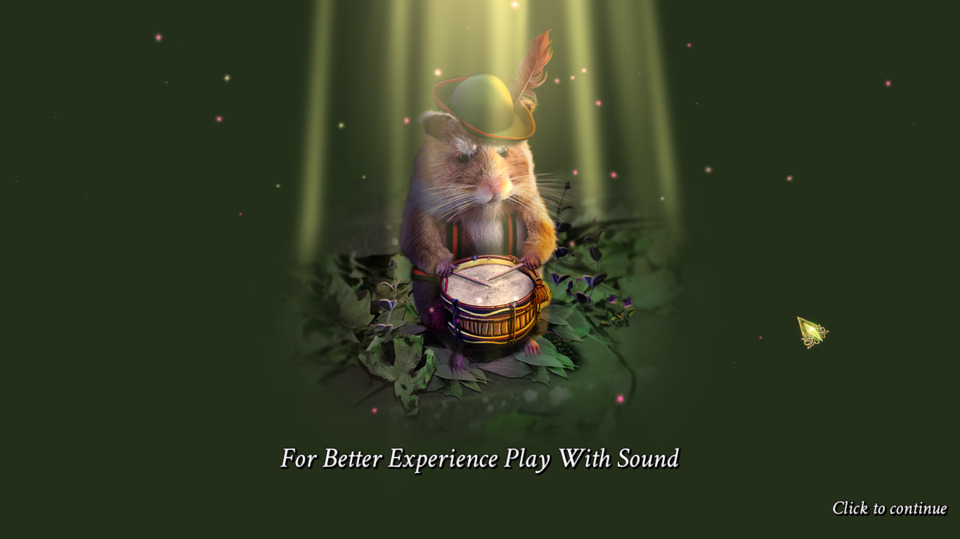
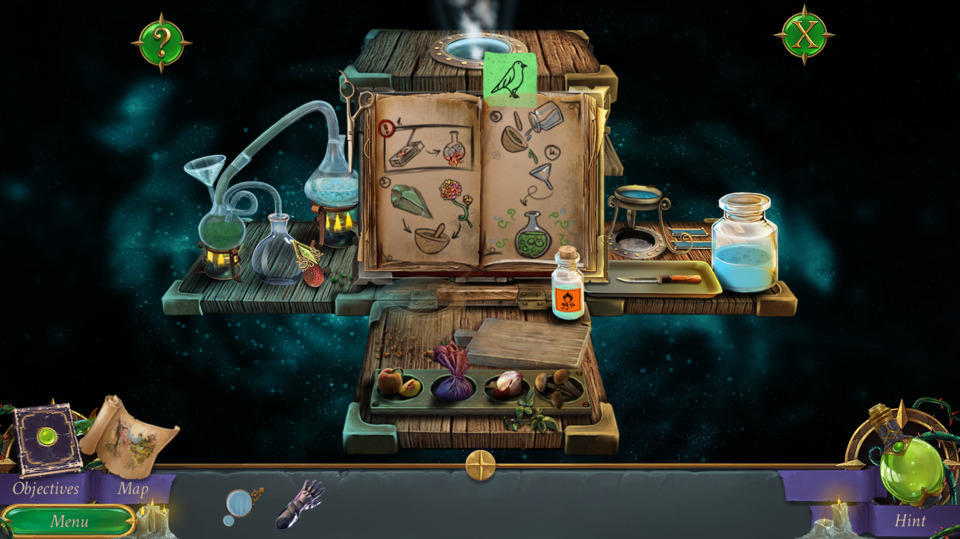
Ranking: E. (I doubt I'll play a HOPA that deserves to be higher than dead last on the list, though most are competent enough to hang on for dear life for the time being. Asking me to subjectively rank the three HOPAs I've played so far doesn't seem fair given how similar they all are. I guess this sits below the one where you smooch Einstein but maybe above the one with the constant memory puzzles?)
That's going to do it for March. With April I'm going to try to fit in another major wishlist game so I have something better than a mid-carder to present, though this soon after DQ11 I'm not quite ready to take on another colossal RPG like Trails in the Sky the 3rd (though I am still eager to start it soon). Here's hoping furtively reaching my hand into my SteamI Indie library will continue producing good results and not the video game equivalent of that venomous stump beast from Flash Gordon.
Log in to comment